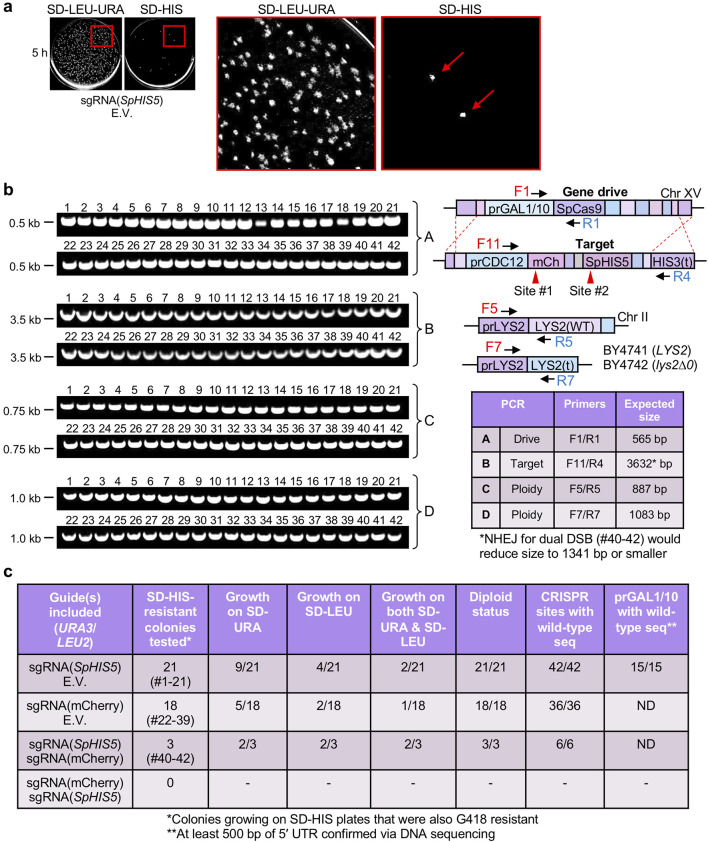Fig. 4.
Analysis of yeast isolates still displaying growth on SD-HIS medium following GD activation. (a) Example plates from Fig. 3 are illustrated with an area highlighted, enlarged for clarity (right) and edited for increased contrast (each plate separately). Red arrows illustrate colonies resistant to the SD-HIS condition. (b) Forty-two separate clonal isolates were obtained from independent SD-HIS plates used for GDs in Fig. 3 that were also resistant to G418. Diagnostic PCRs were performed on purified chromosomal DNA for both the HIS3 and LYS2 loci. Asterisk, for isolates 40–42, if NHEJ had repaired the HIS3 locus following dual cleavage, the amplified product size (PCR-B) would be approximately 1341 bp (depending on included indels). (c) Yeast clones still displaying growth on SD-HIS from GD experiments from Fig. 3 (that were also resistant to G418) were subjected to additional growth and ploidy tests, diagnostic PCRs and DNA sequencing. nd, not determined. Sequencing of the mCherry and SpHIS5 target sites included confirmation of several hundred bases upstream and downstream of the site at minimum. Fifteen of the 21 isolates from the sgRNA(SpHIS5) condition were chosen for sequencing of the GAL1/10 promoter.

